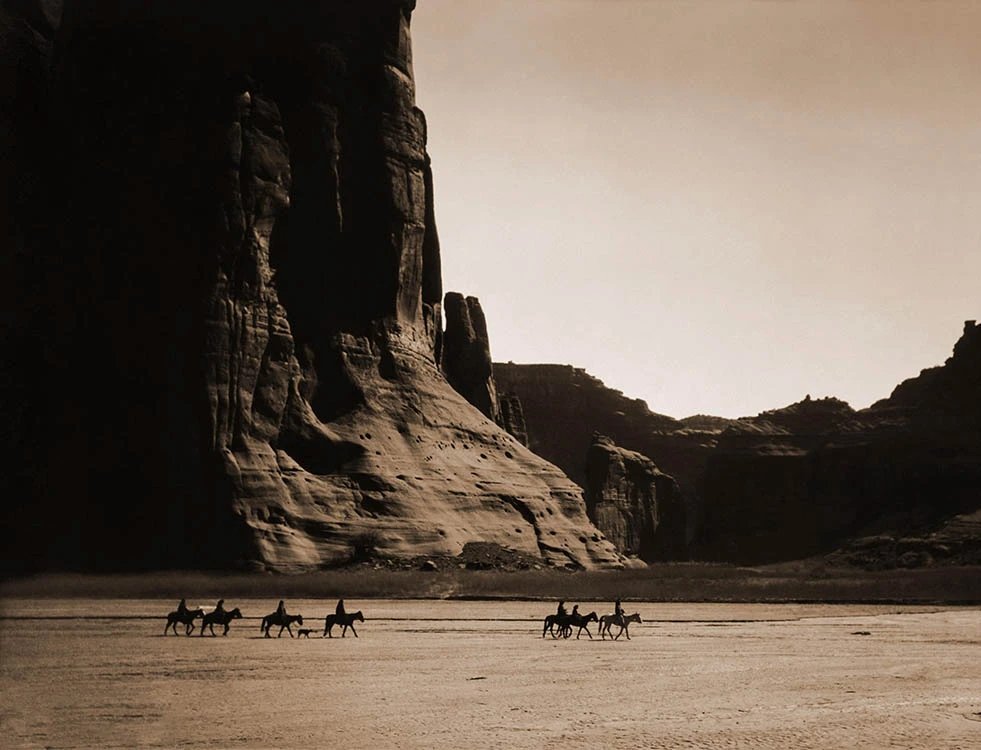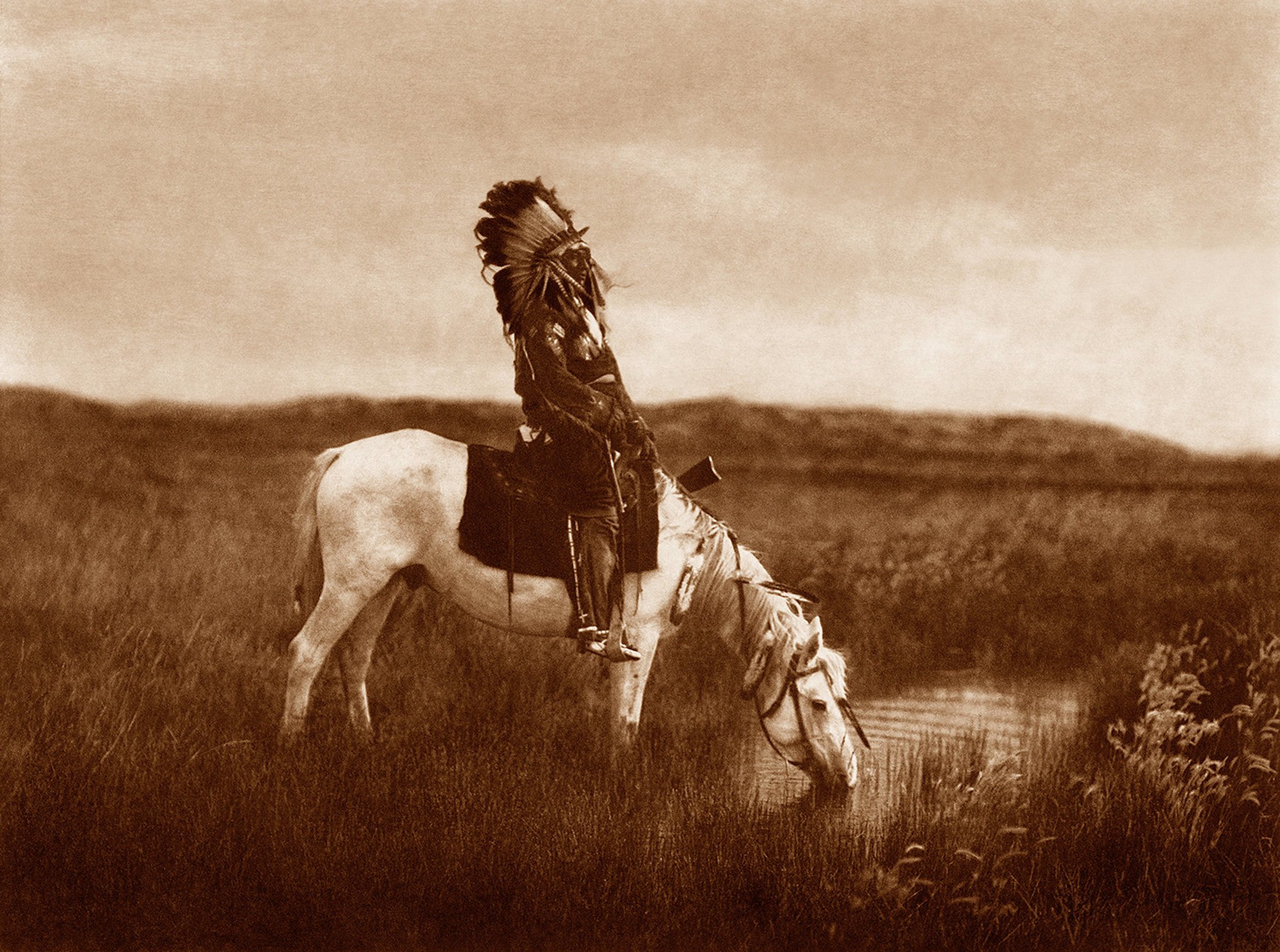Edward S. Curtis
Edward S. Curtis was an American photographer and ethnologist, best known for his extensive documentation of Native American peoples and their cultures. Through his ambitious project, The North American Indian, Curtis captured the lives and traditions of numerous tribes, providing an invaluable record of a world that was rapidly disappearing.
Early Life and Career
Born in 1868 in Wisconsin, Curtis grew up with a strong interest in photography. He built his first camera when he was just a teenager, and by the time he was in his 20s, he had established a successful photography studio in Seattle. In 1895, Curtis had his first encounter with Native Americans, photographing Princess Angeline, the daughter of Chief Seattle. This experience sparked his lifelong fascination with Native American culture.
Photographic Style and Techniques
Curtis's photographic style was characterized by its meticulous attention to detail and a desire to present his subjects with dignity and respect. He often used large-format cameras and employed techniques such as platinum printing and photogravure to create high-quality, visually striking images. Curtis's work was part documentary and part art, as he sought to capture both the cultural traditions and the human essence of the Native American tribes he encountered.
Career Highlights
Curtis's most significant accomplishment was his monumental work, The North American Indian, a 20-volume series featuring over 2,200 photographs and extensive ethnographic text. The project, which took more than 30 years to complete, documented the lives, customs, and ceremonies of over 80 Native American tribes. The North American Indian remains an essential resource for understanding the cultural history of Native Americans in the United States.
Photography Gear
Curtis primarily used large-format cameras to capture the detail and depth of his subjects. Some of the cameras he used included the Century Universal View Camera and the Korona View Camera. These cameras, along with high-quality lenses like the Cooke Anastigmat lens, allowed Curtis to create images that showcased the intricacies of his subjects' faces, clothing, and surroundings. The large negatives produced by these cameras were well-suited for the photogravure and platinum printing processes that Curtis employed.
Photography Books
"The North American Indian: The Complete Portfolios" showcases the monumental 30-year project of renowned photographer Edward Sheriff Curtis, who aimed to produce a comprehensive study of North American Indians. Curtis visited 80 American Indian tribes, capturing the traditional way of life that was beginning to fade. This book compiles his entire American Indian portfolio, presenting a precious historical document and a triumph of the photographic form. For practicing photographers, it offers a unique perspective on the blend of artistic and scientific ambition in Curtis's work.
"Edward S. Curtis: One Hundred Masterworks" is a groundbreaking monograph curated by the world's leading authority on Edward Curtis, Christopher Cardozo. The book presents over 250 of Curtis's most compelling and significant photographs, covering various styles, subjects, and geographical areas. The book reveals Curtis's mastery of photographic mediums and his commitment to documenting and preserving Native American traditions. It features both iconic and rarely seen images, further enriched and contextualized by essays from world-recognized experts, making it an invaluable resource for photographers seeking inspiration and insight into Curtis's artistic vision.
"Edward S. Curtis Portraits: The Many Faces of the Native Americans" contains over 250 beautiful and haunting portraits commissioned by J. P. Morgan as part of a series of books depicting Native American life. Curtis's highly expressive portraits reveal the trust he established with his subjects and serve as exquisite examples of classic portraiture. While Curtis has faced criticism for idealizing his subjects, his deep respect for them and his earnest attempt to understand them shine through in his work. For practicing photographers, this compact volume offers a glimpse into the art of portrait photography and the preservation of a culture's history.
Quotes
"The passing of every old man or woman means the passing of some tradition, some knowledge of sacred rites possessed by no other."
"I want to make them live forever. It's such a big dream I can't see it all."
"Photographs are the most effective means of giving others a correct idea of the life and manners of the Indian."
"The information that is to be gathered ... respecting the mode of life of one of the great races of mankind, must be collected at once or the opportunity will be lost."
"I want to document the Indians of North America as they are today - while there is still time."
Legacy and Influence
Edward S. Curtis's work has left a lasting impact on the fields of photography and anthropology. His dedication to documenting Native American culture has inspired generations of photographers, including Dorothea Lange and Mary Ellen Mark, who have similarly sought to capture the lives and experiences of marginalized communities.
Edward S. Curtis's extraordinary commitment to documenting the vanishing world of Native American culture has left an indelible mark on the world of photography. His striking images and extensive ethnographic research will continue to inspire future generations of photographers and serve as an invaluable resource for understanding the rich cultural history of Native American peoples.
Curtis's work not only provided a visual record of a disappearing way of life, but it also served to raise awareness of the plight of Native Americans in the early 20th century. His photographs have been exhibited in galleries and museums worldwide, and his dedication to preserving Native American culture has garnered him recognition as one of the most important figures in the history of documentary photography.













Explore how Edward S. Curtis's ambitious project to document the lives and cultures of Native American tribes changed the way we understand an entire culture, and learn about the power of photography to capture the soul of a culture.